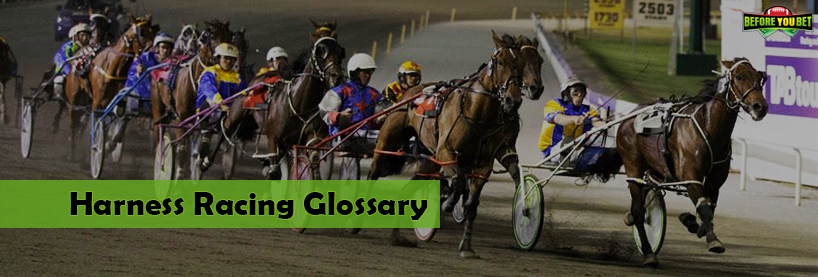Barrier draws are crucial in racing and they are especially important in harness racing. We've explained why barriers are such a key part of harness racing form study and their importance to determining a horse's chances below.
Harness racing barrier draws: why are they so important?
Most punters have heard that barrier draws are crucial in horse racing. This is even more accurate in the sport of harness racing, where a good barrier draw could give a horse a winning chance compared to a bad one which could rule it out. The reason for this is position-in-running plays a huge difference in the chance that a horse will have in a harness racing event.
Unlike horse racing, where most horses will have a preferred racing style (such as leader, on-speed or perhaps a backmarker), in harness racing, while certain horses will still have a preferred style, the barrier draw will often dictate what role they can take in a certain race.
Most horses are capable of leading in the right class. If they draw a favourable barrier such as one or two, then they'll be able to lead if they have the necessary gate speed. If that same horse, racing against the exact same field draws 11, it may have to race as a backmarker instead. Unless the horse is tough in which case it may be able to make an early or mid-race move to find the death seat. There are many other factors to consider but that is a very basic example.
Barrier draws in harness racing will also determine the starting price (SP) of horses. In horse racing, a horse may be $5 from a favourable barrier and $8.50 from an unfavourable barrier. In harness racing, the SP will be even more extreme. A horse may draw barrier one against moderate opposition and go around $1.50. If the horse has barrier 12 against the same field, it may be $11. Once you follow harness racing more closely, you will see these significant SP differences week-in-week-out. And your assessment of these horses will likely follow the market too. It is not uncommon to see a horse $2.50 one week and $101 the next, despite racing in the same class.
Quite often, the barrier draw and likely position-in-running will be one of the leading factors. Many horses will be peg-horses. That means that they will lead when they get an opportunity to do so, take a sit (surrender the lead) if there is a superior horse or pressure-horse in the race and race on the pegs (take shortcuts) if they don’t draw well.
Are you having trouble understanding some of the terms used in this article? Check out our harness racing glossary here!

Looking at a form guide, there will be plenty of horses where you will see their position-in-running listed as leader, behind leader, three back on the pegs, four back on the pegs etc. Others will often have a pattern that may have the majority of runs as outside leader (death seat). These are horses that like to race tough. Barrier draws are less important to these horses as they can make a move to land the position they desire – if they draw poor, it does mean that they will have to do more work compared to drawing barrier two or three and landing outside the leader in the early stages. Therefore, you need to try and predict the tempo and expected work that a death seat horse will endure to get to its preferred position.
It is fine to look at barrier draw statistics, but our advice is to not get too caught up on them. Harness racing is determined by position-in-running and race tempo. Similar to horse racing, backmarkers will find it hard to win races often as they are generally too far back in the run. They come into play when the leaders and on-pace horses set up a very fast early tempo, or when a backmarker has a significant speed advantage over their rivals allowing them to mow down rivals in a few strides.
Champion pacer Im Themightyquinn was the pin-up horse for a dominant sit-sprinter that could run down his opposition from anywhere in the field. He was capable of sitting last and sustaining a long run to hit the lead in the last 400m before going on to claim victory. In contrast, Blacks A Fake was an on-pace horse that would lead or race outside of the leader to win the majority of his races.
Working out speed maps is the best advice that we can give when it comes to harness racing barrier draws. Try to work out the potential leader(s), death seat horse(s) and then work out the other key positions. The barrier draw will help narrow down the candidates for each key position-in-running.



